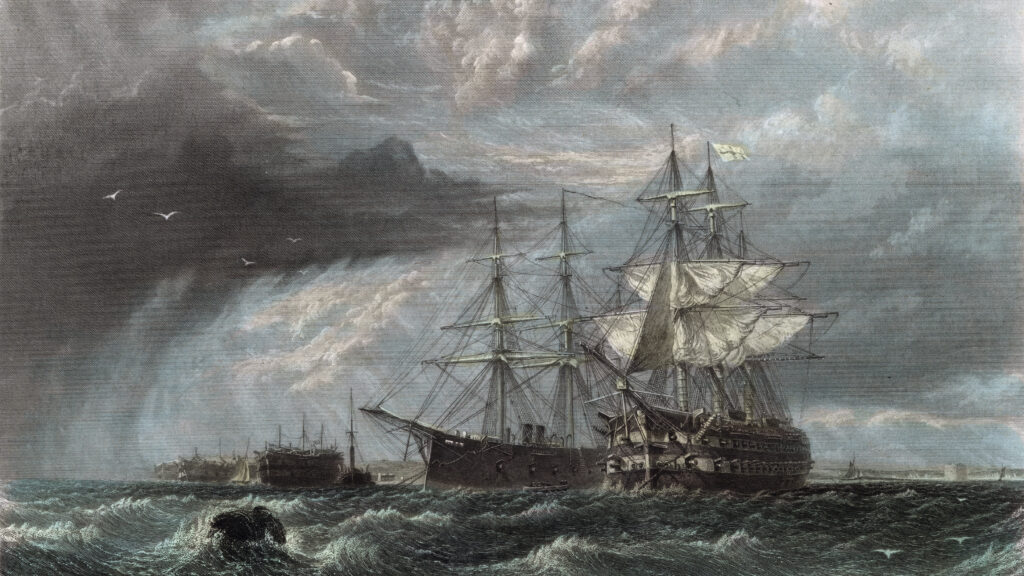Copyright STAT

When philosophers imagined the ship of Theseus, they asked: Can a vessel that has all its planks replaced one by one over time as it sails uncharted waters still be considered the same ship? Neuroscience offers a fascinating answer to this conundrum: yes — and not quite. The brain is rebuilt in much the same way, plank by plank, neuron by neuron. Cells are born and die, synapses rewire, and entire populations of neurons drift in and out of activity, even as our sense of self seems to sail on undisturbed. Advertisement For me, this isn’t just an abstract metaphor for how the brain works. It’s the reality I’ve lived through. I study memory at Boston University, where my lab investigates how specific networks of brain cells encode, store, and even rewrite memories. We’ve shown, for instance, that artificially activating positive memories in mice can buffer against stress and depression. But my most personal experiment came when alcohol rewired my brain from within and quietly began rotting its most important planks. For about a decade, I spiraled, until I made the decision to channel my brain’s innate changeability not toward oblivion, but toward health, healing, and the possibility of happiness. Advertisement In biology, change isn’t optional — it’s the default setting. Nearly every cell in the body eventually turns over, and every memory we revisit reshapes its own neural circuitry. Memory is not a static recording; it’s a living reconstruction. That same plasticity that allows us to learn and adapt also leaves us vulnerable to patterns that hijack the system. Down to our DNA, biology is always in motion. But sometimes, the intersection of adversity and genetic predisposition creates the illusion of stasis. We become stuck and live inside the moments we’re trying to escape. Addiction, at its core, is memory’s dark side: an overlearned association between relief and a substance, rehearsed until it becomes automatic. I learned this the hard way. After the sudden death of my dear friend and lab partner, Xu Liu, I pressed forward in the lab, driven by a need to preserve his legacy through the science we loved. But underneath the progress, grief and exhaustion began to carve new paths in my brain. What started as a nightly drink to soften the edges turned into a ritual of escape. Then, it turned into something I couldn’t live without. I’d wake up at 3 a.m. and need to take double shots of liquor, for instance, just to fend off the physical and mental torment that withdrawals bring with them. The same scientist who studied memory manipulation found himself manipulated by memory — seeking oblivion to avoid reliving loss, and refusing to face the full weight of the finality inherent to death. Eventually, my oldest friends and my wife staged an informal intervention. The ship that was me, creaking under the weight of silence and grief, wasn’t going to capsize on their watch. Their message was simple and unshakable: connection, not control, is what saves you. I joined the Recovery Elevator Café RE community, which is an alternative to AA without any presumed religious affiliation, and it was there that I first internalized a phrase that now anchors both my work and my life: The opposite of addiction is connection. Advertisement This wasn’t just an emotional breakthrough. It was a neurobiological one. Positive social interaction floods the brain with chemicals like oxytocin and dopamine, which aren’t just feel-good modulators in the brain; they’re molecular glue that helps form new neural links. Healing, like memory, is a relational act: Neurons that fire together wire together — and people who are present for one another become presents for one another. In recovery, connection became my new experiment. I began retraining my brain to extract reward from conversation, from movement, from simply being here. Sobriety didn’t restore the old version of me; it allowed me to build a new one from the driftwood of the past. Just like the ship of Theseus, recovery is an iterative reconstruction. I suspect that the neurons that once fired when I reached for a drink now activate when I reach for conversation, exercise, or moments of gratitude. In this sense, biology doesn’t erase. It repurposes. Some of the hardest memories I carry have become the most instructive. The darkest among them center on the handful of nights where I nearly drank myself to death. Yet today, I no longer feel shame. Those memories have changed — from raw grief to a deep, sustaining gratitude that the same neuroplasticity that once fueled my addiction also powered my recovery. In scientific terms, the physical underpinnings of memory, the engram, has been updated. In human terms, it’s through updating what these memories mean to me that I’ve found a sort of internal redemption. This personal shift parallels what we observe in the lab. When we activate positive memories in mice, their stress responses diminish; their brains literally re-route emotional traffic. In humans, therapy and mindfulness work similarly by re-contextualizing painful memories until they begin to soften their emotional sting. Neural ensembles that once encoded fear are gradually replaced or quieted by those representing the present. Biology calls this representational drift. I’ve come to believe life calls it healing. Advertisement That principle — using good memories as antidotes — guides both my research and my recovery. Every week, I ask students, fellow people in recovery, or readers to recall moments that remind them of who they are at their best. Each recollection lays down a new plank on the ship of Theseus. Over time, the vessel becomes strong enough to carry grief without capsizing under it. I do this because addiction isolates, but recovery reconnects. At Café RE, sharing stories of relapse and redemption helped rewire my shame into empathy. Social connection here isn’t just therapeutic — it’s literally chemical. It boosts serotonin, steadies cortisol, and restores activity in areas of the brain like prefrontal cortex, the brain’s control center. The very systems that addiction hijacks can, with community, be recruited for resilience. It’s tempting to think of recovery as a single turning point, a before-and-after moment. But the brain reminds us it’s a continual process. Sobriety isn’t a finish line. It’s an ongoing act of remembering differently, of choosing, again and again, which version of ourselves we want to reinforce. When people hear that my lab can “create and delete” memories in rodents, they picture some sci-fi mind wipe. But the reality is subtler and more hopeful. Memory manipulation isn’t about erasure. It’s about reshaping emotional tone and what experiences mean to us. We can quiet the fear tied to a traumatic memory without deleting the event itself. Therapy works the same way: reframing a painful story while honoring its truth. That’s what I did with my own past. Xu’s death, once too painful to bear, now feels like a lesson plan for love, loyalty, and purpose. The nights I nearly died drinking have become a reference point for gratitude. My memories didn’t vanish. They evolved. And in changing them, I changed myself. Neuroscience has a name for this: post-traumatic growth. It’s the measurable increase in empathy, gratitude, and meaning that can follow crisis. Brains that survive trauma often emerge more connected, more flexible. It’s not inevitable, but it’s possible — and biology shows us how. Change at the synaptic level supports change at the personal one. Advertisement That truth is humbling — and empowering. The same brain that built addiction also built my recovery. The same plasticity that encoded fear also encodes courage. We are all, quite literally, wired for renewal. Today, I’m still learning to live with change. But now, I embrace it. The question isn’t whether we change — it’s what we change for. Nature changes by default. But progress? That takes direction. For me, the direction is clear: connection, discovery, service. Mentoring young scientists. Supporting others in recovery. Turning grief into fuel for compassion. The ship of Theseus isn’t a philosophical puzzle. It’s a permission slip that says we are allowed to be rebuilt. Whether we’re recovering from trauma, loss, or addiction, every new plank is a testament to our resilience. Biology gave us a mutable brain. Memory gives us the ability to steer it. Change is the cost of staying alive — and the gift that lets us become something better. Steve Ramirez, Ph.D., is an associate professor of psychological and brain sciences at Boston University.



